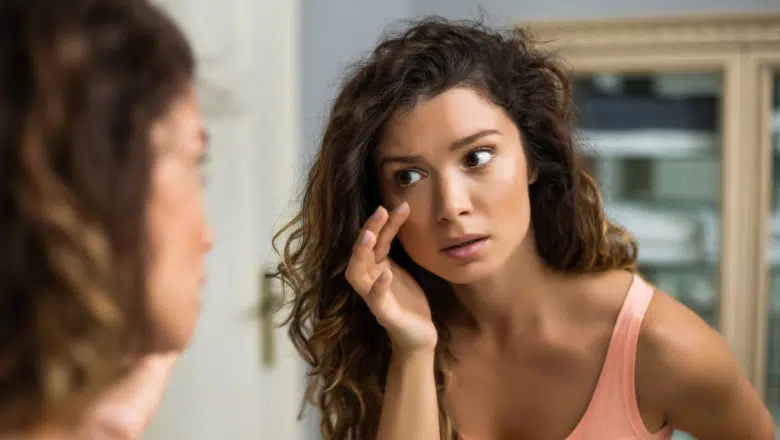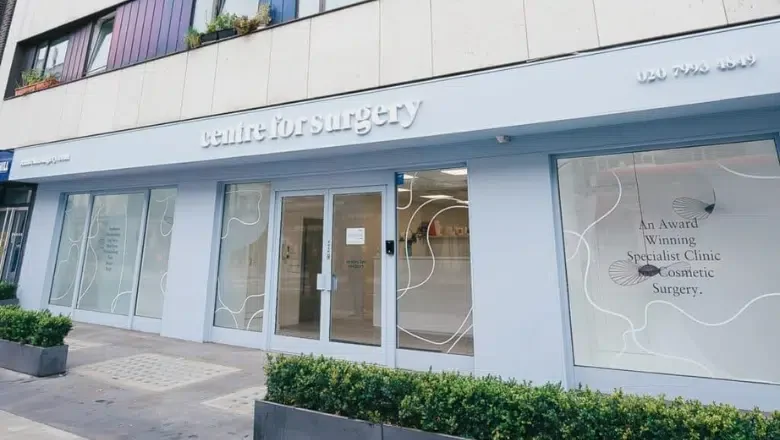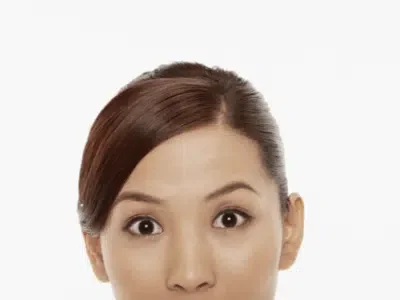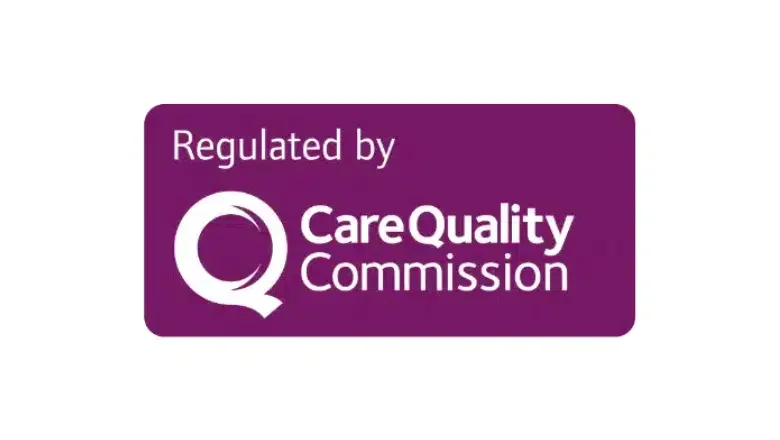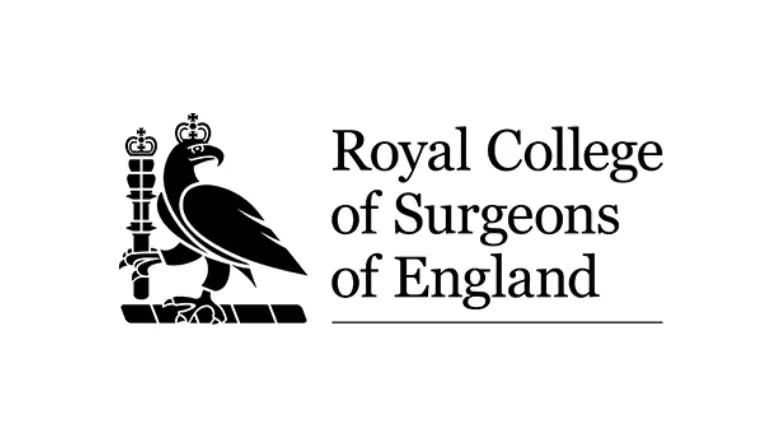Eye bags are swollen or puffy areas that appear under the eyes, making it look like you have bags or dark circles there. Many people experience them, and it can happen to anyone, no matter their age. However, it does become more common as we get older. Eye bags can be quite annoying because they can make you look as though you’re very tired or even older than you really are.
Several things can cause eye bags to appear. Getting older is one reason, but your genes can also play a role. Not getting enough sleep or spending a lot of time in the sun can also lead to eye bags. Some of these causes are things that you can change quite easily in your daily life, while others might be more difficult to get rid of.
RELATED: What Are Eye Bags Under The Eyes?
Fortunately, if you’re bothered by having bags under your eyes, there are bags under-eye treatment options and several effective ways to deal with them at Centre for Surgery. One thing you might think about is making sure you get enough sleep. Medical treatments are also available, such as lower blepharoplasty surgery, which is a specific operation to help with this problem. If you’re thinking about doing something about your eye bags, coming to our clinic in London would be a good idea. There, we can talk with you in detail to figure out what might be causing your eye bags and decide on the best treatment for your particular situation.
What Causes Eye Bags?
Genetics and Hereditary Factors
Eye bags might be something you’ve inherited from your family through their genes. This could mean you have a natural tendency to have weaker skin or perhaps you retain more fluid than other people, both of which can lead to the appearance of eye bags.
Ageing and Skin Elasticity
There are different causes of eye bags, and they can vary from one person to another. Some of the most common causes are explained here:
Ageing and changes in skin’s ability to stretch (elasticity)
As we age, the skin under our eyes loses important collagen and elastin. These are needed to keep our skin firm and stretchy. When these start to go away, the skin gets weaker, which can lead to eye bags.
Weakening of muscles and other changes
Some muscles help hold up the lower part of your eyelids, and they can get weaker over time. Fat also stays in place around your eyes, but as you age, it can start to stick out and create a puffy look. Sometimes, gravity pulls this fat downwards, and it collects in the lower eyelids, causing eye bags to form.
Lifestyle Factors
Your daily habits and lifestyle can play a big role too. Here are some examples:
- Stress: If you’re often stressed out, it might cause inflammation and extra fluid to build up, leading to eye bags.
- Not getting enough good-quality sleep: When you don’t sleep well, the blood vessels under your eyes can get wider, creating that puffy look.
- Eating the wrong kinds of food: Diets that are high in salt and processed food can make you retain more fluid and cause swelling in your face, including under your eyes.
While getting older is the main reason people develop eye bags, these other factors can also contribute. If you want to reduce the appearance of eye bags, there are things you can do, like taking care of yourself by getting enough sleep, eating a healthy diet, and protecting your skin from the sun. By managing these lifestyle factors, you might be able to make your eye bags less noticeable.
Types of Eye Bags
Puffy Eye Bags
Lots of people notice that they have bags under their eyes. This usually looks like the skin below the eyes is puffy or swollen, and it can happen for a couple of reasons:
Inflammation
Sometimes, the tissues around the eyes become inflamed, swell up, and look puffy. This can happen because of allergies or problems with the sinuses, which are the spaces inside your face around your nose.
Fluid Retention
The skin around your eyes is delicate and can easily hold onto fluid. This can be because of eating too much salt, changes in your hormones, or even changes in the weather.
RELATED: Bags Under The Eyes and Dark Circles – Causes and Treatments
Home Remedies for Eye Bags
If you’re bothered by having puffy bags under your eyes, there are some things you can try at home to help:
- Get Enough Sleep: Making sure you sleep well can stop fluid from building up under your eyes, which helps reduce puffiness.
- Stay Hydrated: Drinking enough water is another way to stop fluid from collecting under your eyes.
- Use Cold Compresses: You can put something cold on your eyes, like a cold compress or even chilled slices of cucumber. This makes the blood vessels smaller and can bring down the swelling, giving you quick relief.
It’s worth remembering that while these home treatments might help in the short term, they might not get to the root of what’s causing your eye bags. If you find that the puffiness under your eyes is sticking around for a long time, or if it’s really bothering you and affecting how you feel about the way you look, it might be a good idea to talk to a specialist plastic surgeon at Centre for Surgery. They can look at your particular situation and help you figure out what might be the best way to deal with your eye bags.
Tear Trough Hollows
Tear trough hollows are sunken areas often between the lower eyelid and the cheeks. These hollows make the skin look depressed and can result from losing volume and collagen in that part of the face. This can cause you to look tired or older than you really are. Thankfully, treatments available don’t require surgery, like tear trough fillers, also known as under eye fillers. These fillers can add volume back into the hollow area, reducing the sunken appearance.
Under Eye Bags
Under-eye bags, sometimes referred to as cheek bags, are different from tear trough hollows. They involve the sagging or swelling of the skin in the lower eyelid and upper cheek region. The condition of these lower eyelid bags usually results from a combination of factors, such as getting older, genetic makeup, and sun damage.
RELATED: How To Get Rid of Under Eye Bags
Treating under-eye bags might require more than non-surgical treatments. Lower blepharoplasty, or lower eyelid surgery, could be needed to remove the eye bags effectively and give your face a fresher, more youthful look.
While non-surgical options like fillers can often help with tear trough hollows, surgical intervention might be the best solution for under-eye bags.
Eye Bag Treatment
Eye Bag Surgery: A Permanent Solution
If you’re troubled by under-eye bags and are wondering how to get rid of them, eye bag surgery might be the answer you’re looking for. This surgical treatment, also known as lower blepharoplasty, aims to permanently get rid of those puffy eye bags and tear trough hollows.
RELATED: Traditional vs Non-Surgical Blepharoplasty
Advantages of Lower Blepharoplasty Surgery
Lower blepharoplasty is a surgical procedure that targets removing bags under the eyes by eliminating extra skin and fat, resulting in a more youthful and refreshed appearance. Here’s a detailed look at some of the key advantages of this eye bag treatment option:
Long-lasting Results
Unlike temporary treatments like dermal fillers, which need regular maintenance, lower blepharoplasty offers more permanent and long-lasting results. Once the excess skin and fat are removed from the under-eye area, you won’t have to repeat the procedure, making it a more enduring solution to eye bags.
Enhanced Functionality of Eyelids
Lower blepharoplasty goes beyond mere appearance; it can also help properly function the eyelids. By tightening the tissues around the eyes, the surgery ensures the eyelids close appropriately, offering better protection and comfort. This can help prevent dryness or irritation, contributing to overall eye health.
Reduction of Eye Bag-Related Symptoms
People with prominent under-eye bags may experience discomfort, rubbing, or pressure in that area. Lower blepharoplasty effectively tackles these issues by removing the root cause – the extra skin and fat. While non-surgical treatments may temporarily alleviate these symptoms, this surgical procedure provides more dramatic and lasting relief.
Improvement in Medical Conditions
Beyond cosmetic benefits, lower blepharoplasty can also have therapeutic effects for individuals with specific eye-related medical issues. By removing excess fat that may cause discomfort and feelings of heaviness, the surgery can alleviate symptoms like:
- Eyelid misalignment, which can cause irritation.
- Excessive tearing or dryness in the eyes.
- Other discomforts linked to the extra skin and fat around the eyes.
A Boost in Confidence and Aesthetics
Beyond the functional benefits, the refreshed and youthful appearance that comes with lower blepharoplasty can boost self-confidence and overall satisfaction with one’s appearance. The procedure can take years off the face, making individuals feel more confident in social and professional settings.
Here’s what the surgery involves:
Removing Excess Skin and Fat
The surgeon will carefully remove any extra skin and fat in the lower eyelid area, tightening it up. This helps to improve the appearance of puffy eye bags.
Long-lasting Results
Unlike some other treatments, eye bag removal through surgery is a permanent solution. Once the fat is taken away, it doesn’t come back, and the results last for a long time.
However, there are a few important things to keep in mind:
Natural Ageing Process Continues
Although eye bag surgery takes away the bags under your eyes, it doesn’t stop you from getting older. As time goes on, you might notice other signs of ageing, like fine lines, wrinkles, or loose skin around your eyes and face.
Care After Surgery
If you decide to have eye bag removal surgery, it’s very important to take good care of yourself afterwards. This means living a healthy lifestyle, protecting your skin from the sun, and following all the care instructions that your surgeon gives you. Doing these things can help ensure that the surgery’s results last as long as possible.
Eye bag surgery can be a great way to permanently improve the appearance of bags under your eyes, giving you a more youthful and refreshed look. But like all surgeries, it’s a serious decision and needs careful thought and planning. If you’re considering having this surgery, talk to a specialist at Centre for Surgery in London. We can help you understand all the details and decide if it’s the right choice for you.
Recovery after blepharoplasty surgery
During blepharoplasty recovery (eyelid surgery), closely following your doctor’s instructions is crucial. This includes taking prescribed medicines such as pain relievers and eye drops to manage discomfort and aid in healing. Applying cold compresses to the eyes can help to minimise swelling and bruising. Keeping the area around the eyes clean and avoiding rubbing them is essential to prevent irritation or infection. Attending all follow-up appointments with your healthcare provider ensures proper monitoring of your healing process, allowing them to catch and address any potential issues early on. All these steps work together to promote a smooth and successful recovery from eyelid surgery.
Minimising Risks and Complications of an Eyelid Surgery
Like all surgical procedures, eyelid surgery carries some risks and potential complications. However, taking the right steps can minimise these risks. Here’s a UK-specific guide to help you do just that:
Choose a Qualified Surgeon
In the UK, it’s essential to choose a surgeon who is registered with the General Medical Council (GMC) and is a member of reputable organisations such as the British Association of Aesthetic Plastic Surgeons (BAAPS) or the British Association of Plastic, Reconstructive and Aesthetic Surgeons (BAPRAS). These affiliations ensure that the surgeon meets specific standards of training and ethics.
Have a Thorough Consultation
Discuss your medical history, expectations, and any concerns with your surgeon during the consultation. Ensure they are aware of any underlying health conditions, allergies, or medications you are taking. A thorough understanding of your unique situation will allow them to tailor the procedure to minimise risks.
Follow Pre-Operative Instructions
Your surgeon will provide specific pre-operative instructions, including guidance on medications, smoking, and alcohol consumption. Adhering to these instructions is crucial in reducing the risks of complications such as bleeding, infection, or poor healing.
Choose a CQC-Regulated Clinic
In the UK, ensure that the clinic where the surgery is performed is registered with the Care Quality Commission (CQC). This government body regulates and inspects health and social care services, ensuring that they meet fundamental standards of quality and safety.
Understand the Procedure
Knowing what to expect before, during, and after the surgery can help ease anxiety and aid in recovery. Ask your surgeon about the surgical technique, type of anaesthesia, recovery timeline, and potential risks associated with the procedure.
Follow Post-Operative Care Guidelines
After the surgery, adhere strictly to the post-operative care instructions provided by your surgeon or medical team. This might include guidelines on cleaning the eye area, using prescribed medications, avoiding strenuous activities, and attending follow-up appointments.
Report Any Unusual Symptoms
Contact our medical team immediately if you experience unusual pain, swelling, discharge, or any other unexpected symptoms after the surgery. Prompt attention to these symptoms can prevent more serious complications.
Non-Surgical Treatments for Eye Bags
If you’re looking for ways to tackle under eye bags without surgery, there are non-invasive treatments available. These can provide temporary improvements to get rid of under eye bags, although you’ll likely need to keep up with them to maintain the results. Pairing these treatments with healthy lifestyle habits like getting enough sleep, drinking enough water, and eating a nutritious diet can make them even more effective.
Here’s a look at some non-surgical options:
Skincare Products:
Eye Creams
Certain eye creams have ingredients like retinol, hyaluronic acid, and peptides that can help improve the skin’s texture. These ingredients might reduce the puffiness in the eyelid bags temporarily, giving a smoother appearance.
Applying Cold Compresses
A simple cold compress can be an immediate relief method. Placing something cold on the affected area makes the blood vessels smaller, which reduces swelling. You can use a chilled cloth, gel pack, or even items from your kitchen like cold spoons or cucumber slices.
In-Clinic Treatments:
Dermal Fillers for Eye Bags
Tear trough fillers, especially those based on hyaluronic acid, are becoming increasingly popular for treating eye bags and the hollows underneath the eyes, known as tear troughs. But what exactly are these fillers, and how do they work?
What are Hyaluronic Acid-Based Fillers? Hyaluronic acid is a substance that our bodies naturally produce. Its primary role is to retain water, ensuring our tissues are well-lubricated and moist. When used in dermal fillers, hyaluronic acid acts like a sponge, absorbing moisture and expanding, adding volume and plumpness to the skin.
RELATED: Why Under-Eye Filler is Not For Everyone
How Do They Address Eye Bags and Hollows? As we age, or due to genetics and other factors, the area beneath our eyes can lose volume, leading to the appearance of hollows and bags. Hyaluronic acid fillers can be injected into this area to:
- Restore lost volume, making the under-eye area appear fuller and more youthful.
- Smooth out wrinkles and fine lines.
- Improve the overall contour of the face by balancing out the volume.
Duration of Results: It’s essential to understand that dermal fillers are not a permanent solution. Over time, the body will naturally break down the hyaluronic acid and absorb it. While the duration of the results can vary from person to person, based on factors like skin type, lifestyle, and the specific filler used, on average, the results from fillers in the tear trough area can last between 6 to 18 months.
SmoothEye Laser Therapy: Our aesthetic specialists offer laser skin tightening treatments that can tighten the skin and promote collagen production. This might help to reduce the appearance of bags under the eyes over time.
Lifestyle Adjustments:
- Follow a Balanced Diet: Eating a well-rounded diet that’s rich in vitamins and minerals supports overall skin health, including the delicate skin under your eyes.
- Limit Salt Intake: Consuming too much salt can lead to fluid retention, so keeping your salt intake in check can help in reducing puffiness.
- Get Adequate Sleep: Ensuring that you get enough restorative sleep each night helps to prevent fluid buildup under the eyes, reducing puffiness.
- Manage Stress: Chronic stress may lead to inflammation and fluid retention, so practising stress management techniques can positively affect your appearance.
- Stay Hydrated: Drinking enough water each day helps prevent dehydration, which can make under-eye bags more pronounced.
- Wear Sunscreen: Protecting your skin from sun damage by wearing sunscreen can prevent the breakdown of collagen and help to maintain skin elasticity.
These non-surgical options provide ways to address under-eye bags without the need for a surgical procedure. They are generally less invasive and have shorter recovery times, but the results are often temporary. If the under-eye bags persist or are a significant concern, a consultation with a specialist, such as those at the Centre for Surgery, might be necessary to explore more permanent solutions. However, for many, a combination of these treatments and lifestyle adjustments can lead to noticeable improvements in the appearance of under-eye bags.
Eye Bag Surgery FAQs
Is there a link between droopy eyelids and the presence of eye bags?
Yes, droopy eyelids and eye bags can be connected. Weakening muscles and tissues that support the eyelids may result in both droopy eyelids and eye bags. But these conditions can also occur independently. You might have droopy eyelids without eye bags or vice versa. In some instances, addressing the drooping eyelids with surgery can help improve the appearance of eye bags, but a thorough evaluation by a specialist is essential to understand the underlying causes and appropriate treatments for your specific situation.
Is lower blepharoplasty suitable for everyone with eye bags?
Lower blepharoplasty is a surgical method used to decrease eye bags, but it’s not suitable for everyone. The appropriateness of this surgery varies from person to person, and a surgeon will assess factors such as age, skin type, overall health, and the underlying cause of the eye bags during a consultation to determine if you’re a good candidate.
Does the NHS cover lower blepharoplasty for medical reasons?
In the UK, the NHS may cover blepharoplasty in some instances if it is deemed medically necessary, such as when drooping eyelids interfere with vision. However, every case is unique, and individual assessments are made to determine eligibility. If the procedure is considered cosmetic, meaning it’s performed for appearance rather than medical need, the NHS typically would not cover it.
What’s the recovery time for lower blepharoplasty?
The recovery time after lower blepharoplasty can vary between individuals, but generally, most people can return to normal activities within one to two weeks. Swelling and bruising usually subside within a couple of weeks, though it might take several months for the final results to become apparent.
Are there non-surgical alternatives to lower blepharoplasty?
Yes, there are non-surgical treatments for eye bags, such as dermal fillers, laser treatments, and skincare products containing ingredients like hyaluronic acid. These alternatives can provide temporary improvements and are often used for milder cases of eye bags.
Can lower blepharoplasty be combined with other facial procedures?
It is common to combine lower blepharoplasty with other facial rejuvenation procedures like a brow lift, facelift or facial fat transfer to achieve a more harmonious and youthful appearance. Combining procedures can save recovery time and potentially reduce overall costs.
How long do the results of lower blepharoplasty last?
The results of lower blepharoplasty are typically long-lasting. The removed fat and excess skin won’t return. However, it doesn’t stop the natural ageing process, so other age-related changes may still occur around the eyes and face over time.
What are the risks associated with lower blepharoplasty?
Like all surgical procedures, lower blepharoplasty carries some risks and potential complications. These can include infection, bleeding, scarring, dry eyes, difficulty closing the eyes, and temporary or even permanent changes in vision. A skilled and experienced surgeon will take precautions to minimise these risks, and a thorough preoperative assessment can help ensure that you are a suitable candidate for the procedure.
Eye Bag Treatment at Centre for Surgery: Your Path to a Rejuvenated Appearance
At Centre for Surgery, we understand the frustration and self-consciousness that eye bags can cause. These unwelcome signs of tiredness can make you feel older and less vibrant, whether it’s due to ageing, genetics, lifestyle, or a combination of factors.
That’s why we’re proud to offer a comprehensive range of eye bag treatments at our state-of-the-art clinic, located in the heart of London. Our skilled and experienced team of plastic surgeons and skincare professionals are dedicated to providing personalised care and exceptional results.
Why Choose Centre for Surgery for Eye Bag Treatment?
Expertise and Experience
Our surgeons have extensive experience performing surgical and non-surgical treatments for eye bags. Whether you choose lower blepharoplasty surgery or opt for dermal fillers, you can trust our team to deliver the results you desire.
Cutting-Edge Technology
We use the latest medical technology to ensure precision, safety, and effectiveness. We also leverage the best tools to enhance your appearance, from our advanced laser systems to our high-quality dermal fillers.
Tailored Treatments
We believe in individualised care. During your in-depth consultation, our specialists will assess your specific condition and develop a customised treatment plan. We consider your goals, lifestyle, and budget to provide a solution that’s just right for you.
Exceptional Aftercare
At Centre for Surgery, your care doesn’t end after the procedure. We offer comprehensive aftercare support to ensure a smooth recovery and long-lasting results. Our team is available to answer any questions and address any concerns throughout your healing process.
Safe and Caring Environment
Your comfort and well-being are our top priorities. Our clinic is designed to provide a welcoming and relaxed atmosphere, where you can feel at ease. We adhere to stringent safety protocols to ensure the highest standards of care.
Flexible Financing Options
We want to make eye bag treatment accessible to as many people as possible. That’s why we offer flexible financing options to help you afford the care you need without stress.
Explore Our Eye Bag Treatment Options
From surgical interventions like lower blepharoplasty to non-invasive solutions like cold compresses and eye creams, we offer a variety of eye bag treatments to suit every need and preference.
Discover the transformative effects of our eye bag treatments by scheduling a consultation with our friendly and knowledgeable staff. We’re committed to helping you achieve a refreshed and youthful appearance, free from the burden of eye bags.
At Centre for Surgery, we’re not just about treating symptoms; we’re about enhancing lives. Contact us today on 0207 993 4849 and take the first step towards a brighter, more confident you.
